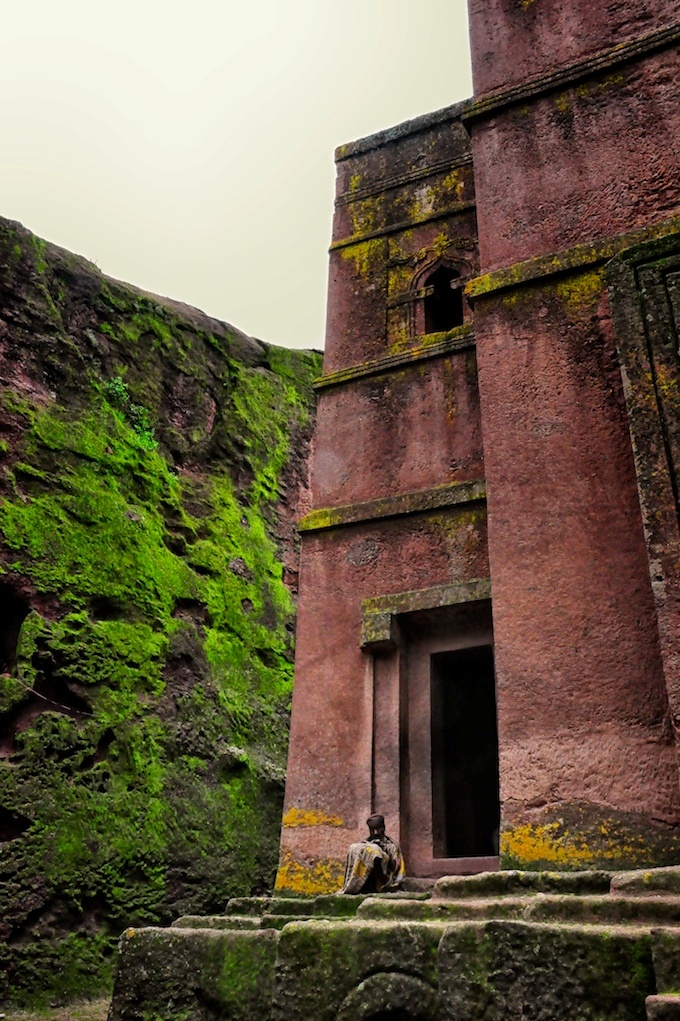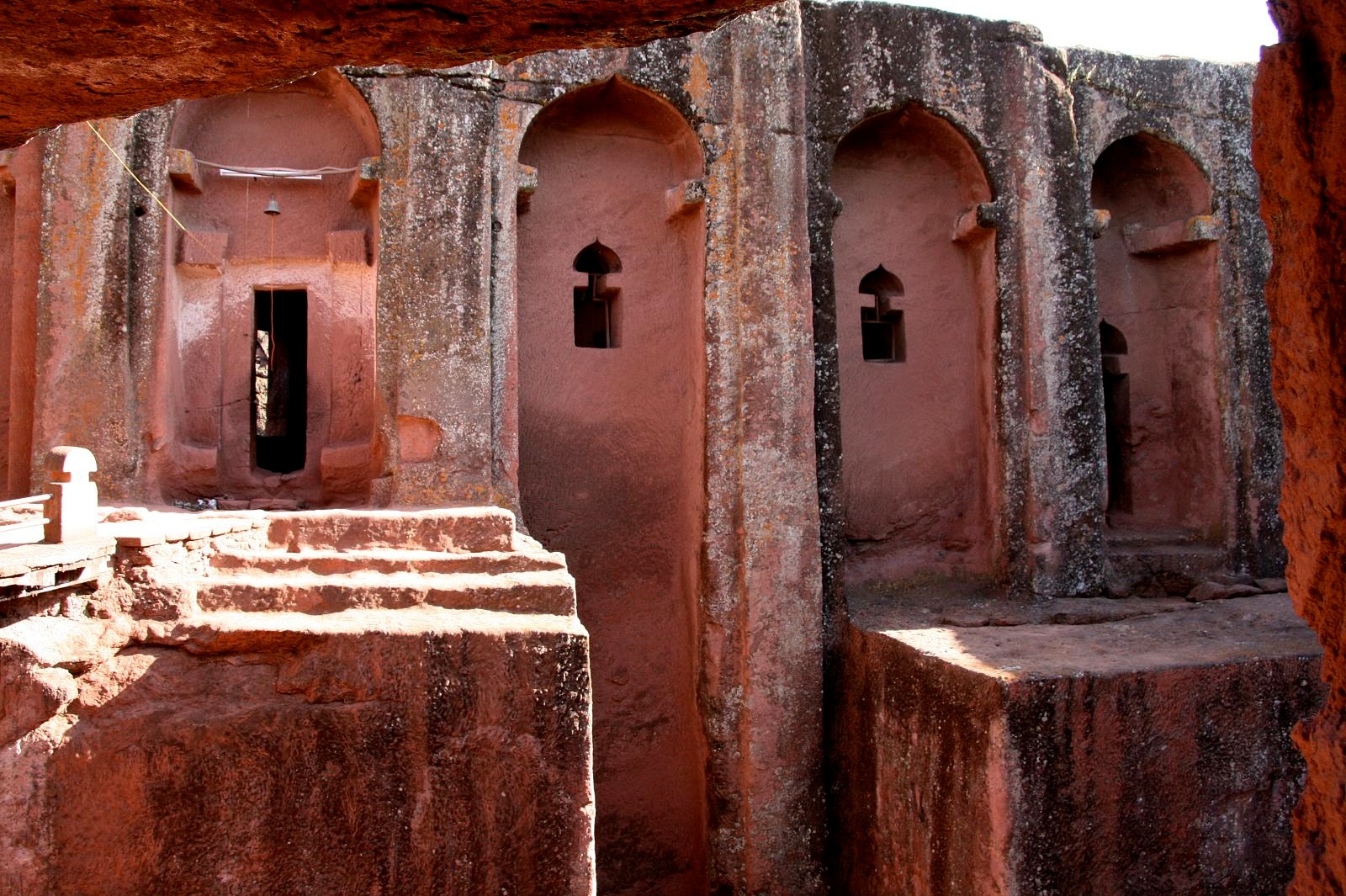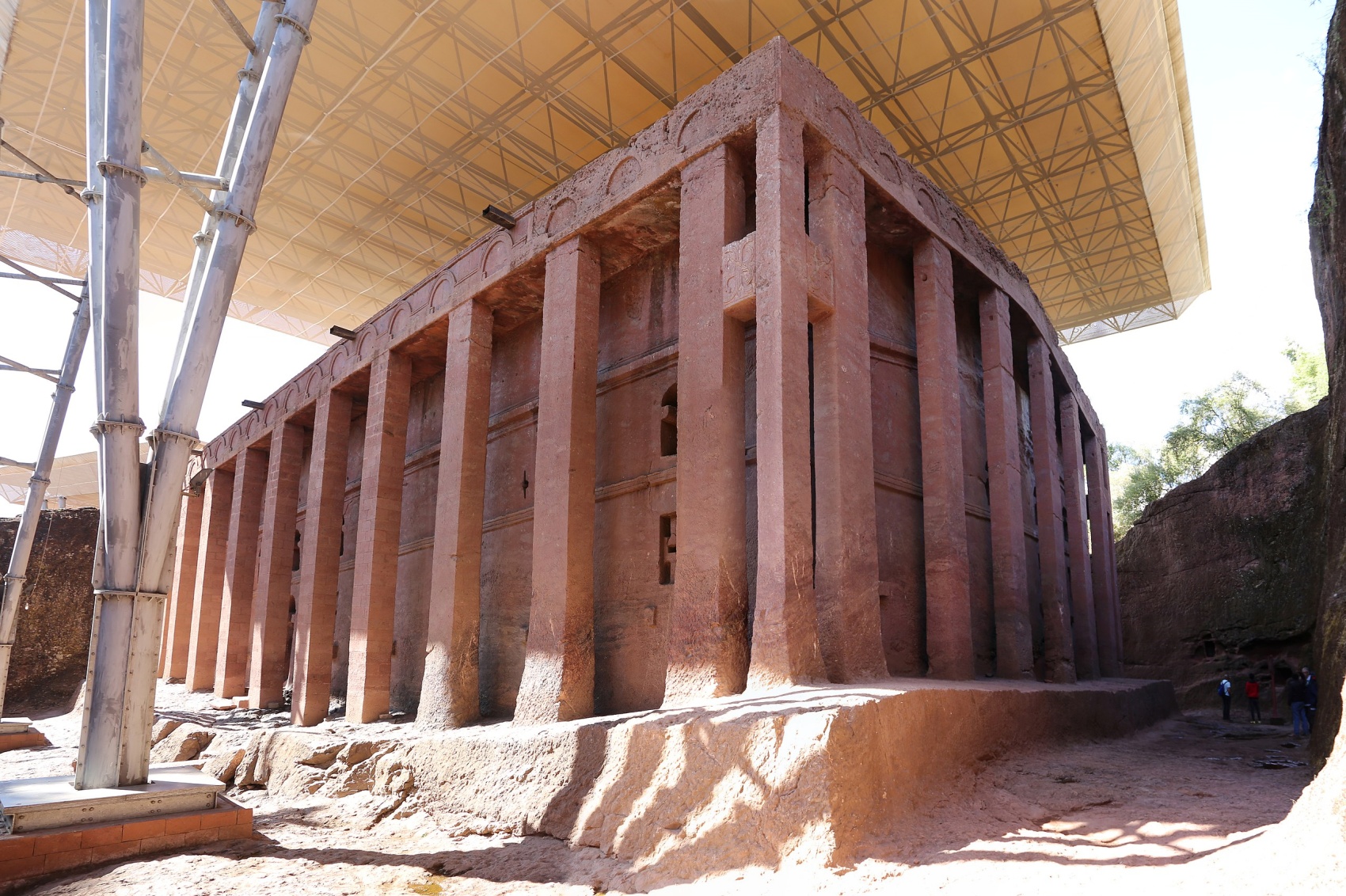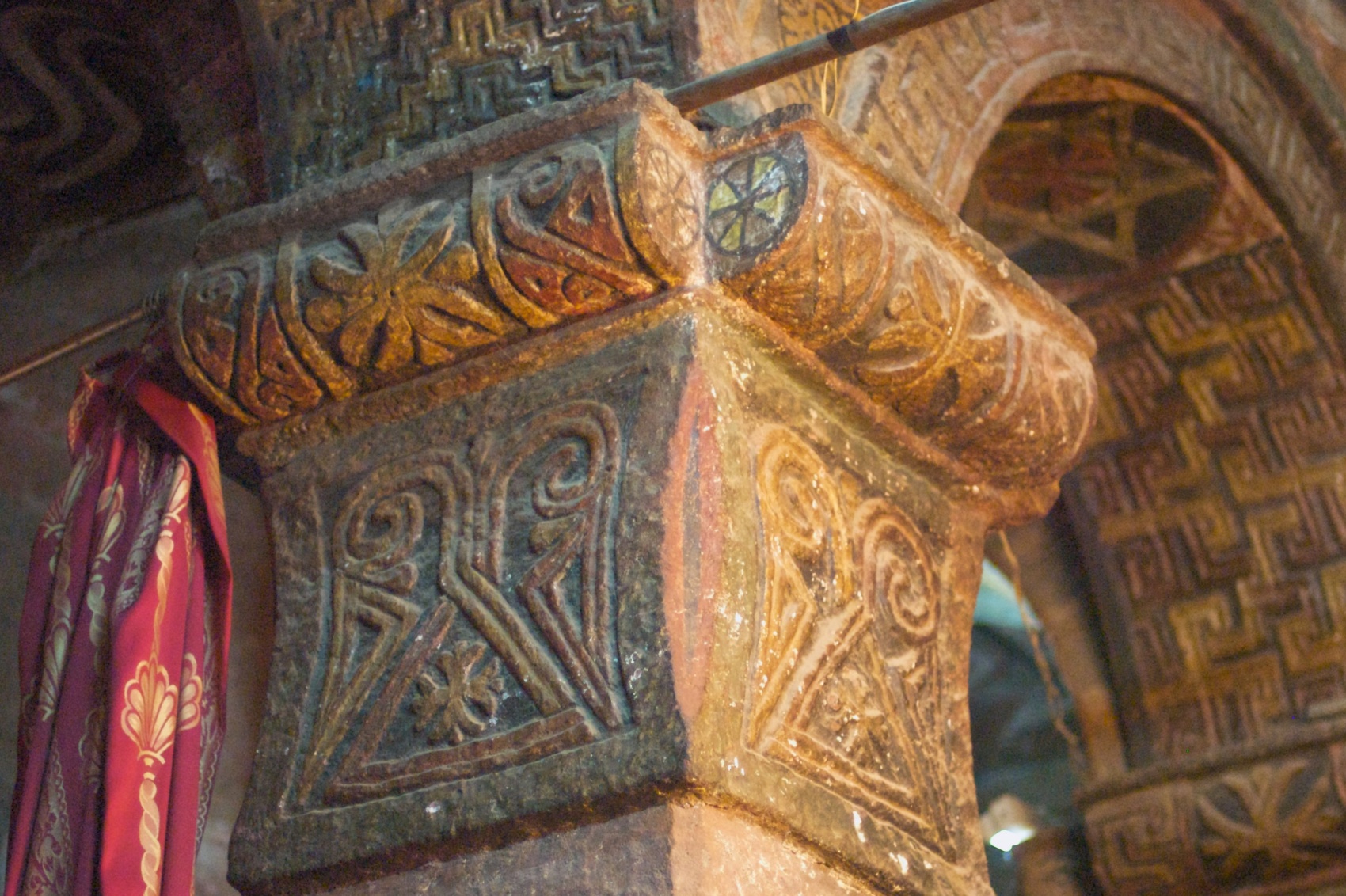The rock-cut monolithic churches of Lalibela are a UNESCO World Heritage Site. The unique monuments are also an important centre of the Ethiopian Oriental Church. Behind Lalibela’s complex of temples, tunnels and caves lies the somewhat lesser-known history of Ethiopia’s medieval Christianity.
The current place name Lalibela comes from the name of an Ethiopian negus (king) – Gebre Meskel Lalibeli. The king ruled the northern part of the country in the late 12th and early 13th centuries. He commissioned the construction of a complex of monolithic churches after the fall of Jerusalem and its occupation by the Muslims. The king wanted to create a ‘New Jerusalem’ to which pilgrims would travel. The buildings were supposed to have been built while the king was still alive, but there is no evidence of this.
Ethiopian monoliths
The churches vary in decoration, but their form is similar. They were all ‘dug’ into the rocks and given geometric shapes. The height of most of the churches exceeds ten metres and the work was done with simple tools. However, some of the buildings in the complex have more original forms. St George’s Church was hollowed out in the shape of an isosceles cross. The church houses a replica of the Ark of the Covenant. Another interesting church is the Biete Golgotha Mikael with a replica of the tomb of Christ and Adam.
The Biete Medhane Alem church is the largest monolithic church in the world. The Church of Mary, on the other hand, has numerous paintings depicting biblical scenes. Interestingly, Arabic (windows), Egyptian and Greek (cross) influences are noticeable in the architecture of the churches.
The eleven churches can be divided in two ways: geographically and architecturally. Five churches are located on the north side of the Jordan stream and another five on the south. The eleventh church, St George’s, is remote from the complex, but has a connection to the rest via tunnels. The churches are also divided into monolithic and non-monolithic. Four of the buildings are hewn blocks of rock, separated from the rest of the rock, meaning they are monolithic.
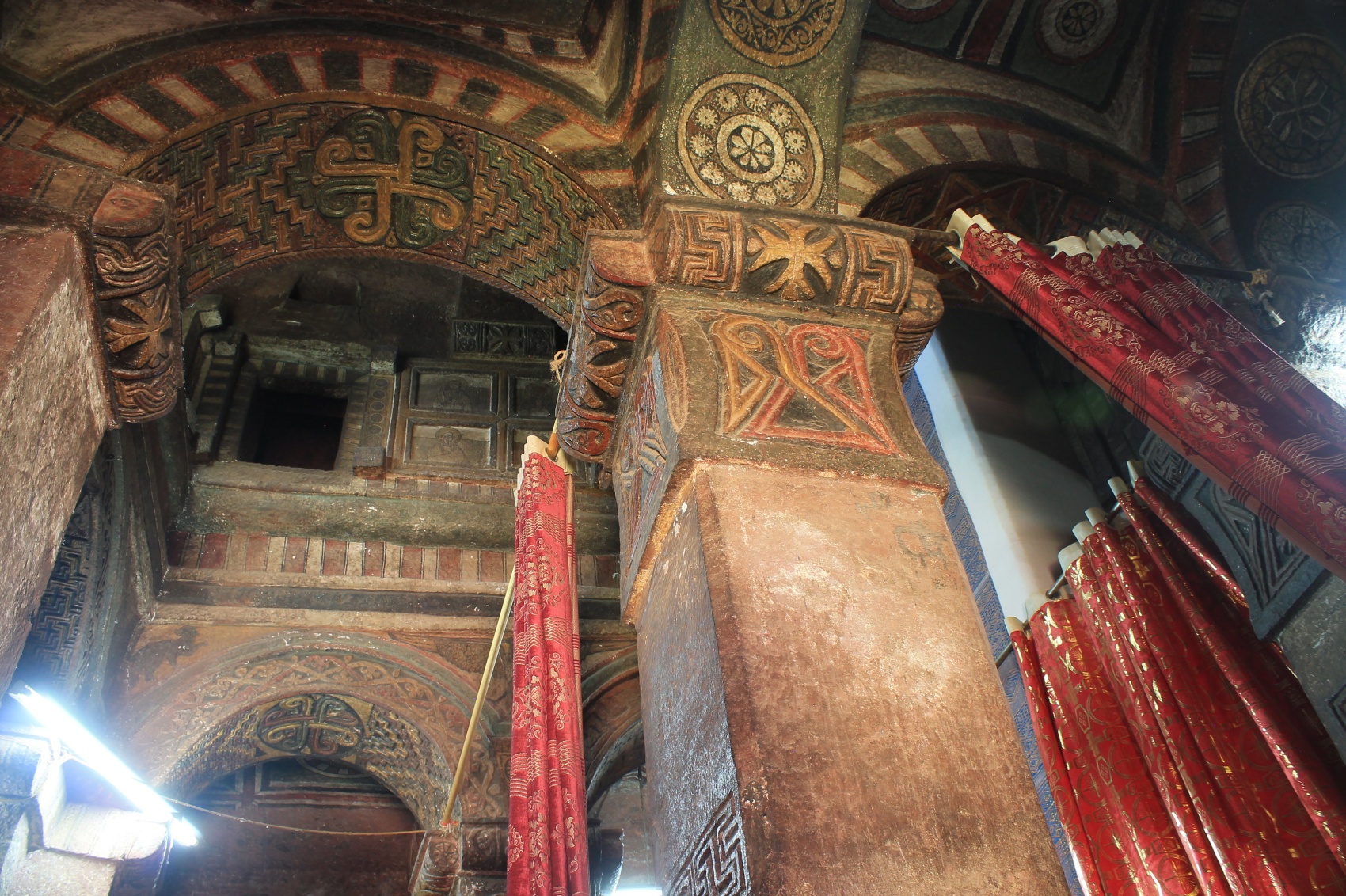
New Jerusalem
The equally intriguing Ethiopian church is worth mentioning. Christianity appeared in this area as early as the 4th century. The church took some elements from Judaism (circumcision and the Sabbath). Interestingly, Ethiopians are convinced that the Ark of the Covenant, lost in the 6th century BC. Ark of the Covenant is located here. The country is supposed to be the heir of ancient Israel.
As BBC Travel reported in an article last year, one monk and two deacons are building Dagmawi Lalibela (Second Lalibela). Work has been ongoing since 2010 and the tools used to excavate the churches are similar to those used in the 12th century. The clergy have already completed the construction of two churches of the New Lalibela. Nine more rock-cut churches remain in the plans. All this to prove that the churches of Lalibela were hollowed out of the rock, without outside help and using simple tools.
The Aksum Empire, located in what is now Ethiopia, was an important, albeit remote, part of the ancient world. Hence, knowledge of the Ethiopian oriental church is not common in Europe. Lalibela’s church complex only gained wider media exposure in 1978, when it was inscribed on the UNESCO World Heritage List. To this day, the churches attract pilgrims and are one of the most important monuments on the Black Continent.
Source: UNESCO
Read also: Sacred architecture | History | Monument | Interesting facts | Africa | whiteMAD on Instagram


